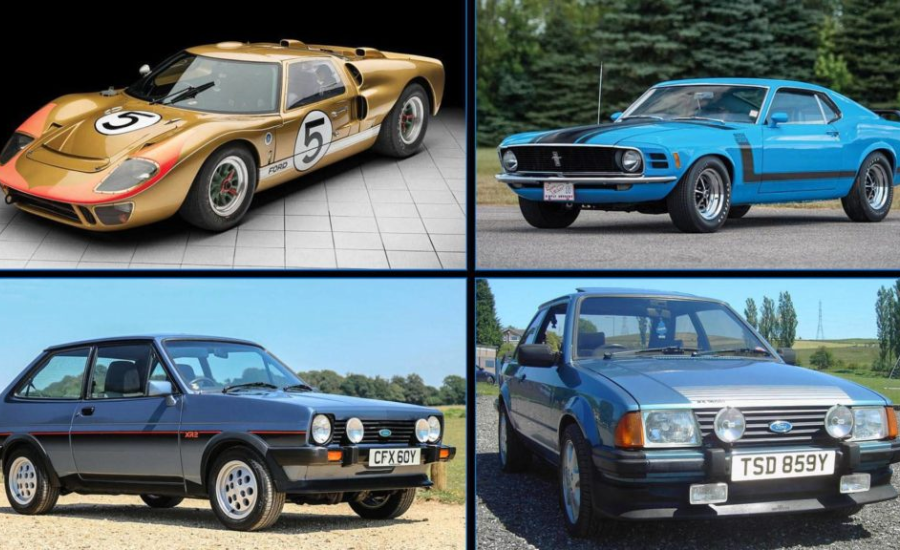For more than a century, Ford has been at the forefront of the automotive industry, pioneering advancements and creating vehicles that have become legendary. https://guia-automovil.com/2020/10/07/los-3-mejores-autos-clasicos-de-ford Throughout its extensive history, Ford has produced numerous models that have not only defined eras but have also captured the imagination and admiration of car enthusiasts and collectors around the globe. Among these, a few standout classics have earned a special place in automotive history. This article takes a closer look at three of Ford’s most iconic classic cars, delving into their rich histories, unique features, and the enduring appeal that has solidified their status as timeless legends in the world of automobiles.
1. Ford Model T: The Car That Changed the World

History
Introduced in 1908, the Ford Model T is often celebrated as the car that revolutionized personal transportation and brought the automobile to the masses. Designed by Henry Ford and his team, the Model T was groundbreaking in its affordability, made possible through mass production on an assembly line—an innovation that transformed manufacturing processes across industries.
Features
The Model T was equipped with a 2.9-liter, 4-cylinder engine that delivered 20 horsepower, a remarkable figure for the early 20th century. Capable of reaching a top speed of around 45 mph, it was versatile enough to be offered in various body styles, including touring cars, sedans, and roadsters. The car’s standout features were its simplicity and reliability, which allowed it to perform well even in rugged, rural environments where roads were often nonexistent.
Enduring Appeal
The enduring legacy of the Ford Model T lies in its role as a pioneer in making car ownership accessible to the average person. It not only shaped the future of the automotive industry but also had a profound impact on society, enabling greater mobility and transforming everyday life. Today, the Model T is highly valued by collectors and enthusiasts, not just as a classic car but as a powerful symbol of American innovation and the birth of modern transportation.
2. Ford Mustang: The Birth of the Pony Car

History
The Ford Mustang burst onto the scene in 1964, forever changing the landscape of the American automotive market and ushering in the era of the “pony car.” With its distinctive long hood, short rear deck, and bold, aggressive design, the Mustang quickly became a symbol of American culture and automotive passion.
Features
The original Mustang offered a wide array of engine options, catering to a diverse range of drivers. It ranged from a modest 170-cubic-inch inline-six to a robust 289-cubic-inch V8, providing varying levels of power and performance. Available in multiple trims—including the fastback, convertible, and coupe—the Mustang’s appeal lay in its ability to combine striking style, impressive performance, and affordability. This winning combination made it a favorite among young drivers and car enthusiasts alike.
Enduring Appeal
The Ford Mustang continues to be one of the most iconic and enduring cars in automotive history. Its ability to evolve while staying true to its roots has allowed it to remain relevant and beloved across generations. The Mustang’s legacy is not just about performance and style; it embodies the spirit of freedom, individuality, and the quintessential American dream. Even today, the Mustang continues to inspire and captivate car lovers around the world, making it a timeless symbol of the automotive world.
3. Ford GT40: The Legend of Le Mans

History
The Ford GT40 is a car born out of rivalry and ambition. In the early 1960s, Henry Ford II sought to beat Ferrari at the prestigious 24 Hours of Le Mans, leading to the creation of the GT40. The GT40 went on to dominate Le Mans, winning four consecutive times from 1966 to 1969, cementing its place in racing history.
Features
The GT40 was a technological marvel, featuring a mid-engine design, lightweight construction, and a powerful V8 engine. The Mk II version, equipped with a 7.0-liter engine, was capable of reaching speeds over 200 mph. Its aerodynamic design and advanced engineering made it a formidable competitor on the track.
Enduring Appeal
The Ford GT40 is not just a racing legend; it’s a symbol of American determination and engineering prowess. The GT40’s legacy continues with modern iterations like the Ford GT, which pay homage to its illustrious predecessor.
FAQS
1. Why is the Ford Model T considered one of the most important cars in automotive history?
The Ford Model T is often hailed as one of the most important cars because it was the first automobile to be mass-produced on an assembly line, making it affordable for the average person. This revolutionized personal transportation and helped establish the automobile as a staple of modern life.
2. What is a “pony car,” and how did the Ford Mustang create this category?
A “pony car” is a class of American muscle cars that are compact, affordable, and stylish with sporty performance. The Ford Mustang, introduced in 1964, created this category with its long hood, short rear deck, and wide range of engine options, appealing to a broad audience and becoming a cultural icon.
3. What made the Ford GT40 so successful at the 24 Hours of Le Mans?
The Ford GT40 was successful at Le Mans due to its advanced engineering, including a powerful mid-engine V8, aerodynamic design, and lightweight construction. These features, combined with Ford’s determination to outperform Ferrari, led to the GT40’s four consecutive wins from 1966 to 1969.
4. Are there modern versions of these classic Ford cars?
Yes, Ford has continued to honor its classic models with modern versions. The Mustang is still in production today, evolving with modern technology while retaining its iconic design.
5. Why do these classic Ford cars have such enduring appeal?
These classic Ford cars have enduring appeal due to their historical significance, innovative features, and iconic designs.
Conclusion
The Ford Model T, Mustang, and GT40 are more than just cars—they are symbols of ingenuity, performance, and cultural significance. Each of these classics has left an indelible mark on automotive history, from the Model T’s role in democratizing transportation to the Mustang’s creation of the pony car segment and the GT40’s dominance at Le Mans. Their enduring appeal lies in their ability to capture the imagination and passion of car lovers worldwide, making them timeless icons that continue to influence the automotive landscape today.
Stay in touch for more updates and alerts: WebcordVirus!



